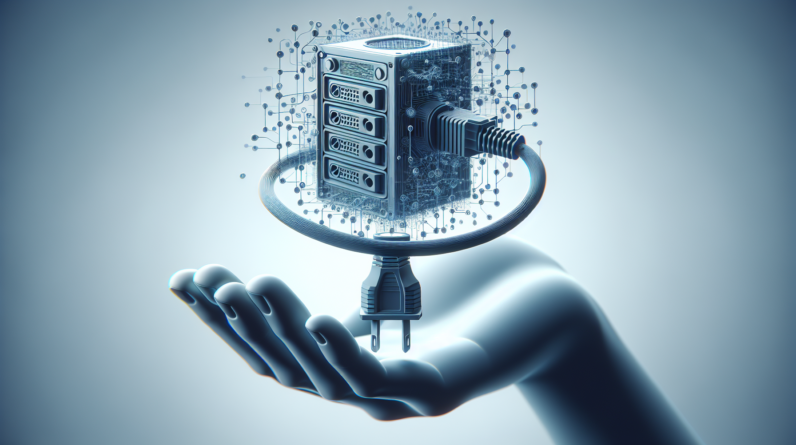
Have you ever wondered if System IO is worth investing your time and effort into? In the fast-paced world of technology, where new tools and systems are constantly being introduced, it can be overwhelming to decide which ones are truly worth incorporating into your workflow. In this article, we will explore the benefits and drawbacks of System IO, helping you make an informed decision on whether it is worth your while. Whether you are a seasoned professional or just starting out, join us as we navigate the world of System IO and discover if it is the right fit for you.
Is System IO Worth It?
Definition of System IO
System IO, or Input/Output, refers to the process of transferring data between a computer system and an external device or network. It involves both the input of data into the system and the output of processed data to produce meaningful results. System IO is a crucial component in any computer system, enabling effective communication with various hardware or software components.
Advantages of System IO
Seamless Data Transfer
One of the primary advantages of System IO is the seamless and efficient transfer of data. Whether it’s reading data from a file, sending data over a network, or interacting with peripherals like keyboards and printers, System IO provides a standardized and reliable approach. By utilizing System IO, you can ensure that data is accurately transmitted, enabling smooth operation and effective communication between system components.
Versatility and Compatibility
System IO offers a high level of versatility and compatibility with different hardware and software components. Regardless of the specific input or output device, System IO provides a unified method to interact and transfer data. This versatility allows for easy integration with various systems, minimizing compatibility issues and simplifying the development and maintenance of software applications.
Data Integrity and Security
System IO plays a critical role in ensuring data integrity and security. It enables the validation and verification of data inputs, preventing errors or malicious data from corrupting the system. By implementing proper input/output handling techniques, data can be securely transmitted and safeguarded from potential threats. This level of data protection is essential, particularly in systems dealing with sensitive information or critical operations.
Disadvantages of System IO
Performance Overhead
While System IO provides essential functionality, it can introduce performance overhead. The process of reading or writing data from/to external devices or networks consumes system resources, such as CPU cycles and disk I/O operations. In situations where the system is heavily burdened with IO operations, such as massive data transfers, the overall performance of the system may be impacted. Careful consideration is necessary to balance the benefits of IO operations against the potential performance drawbacks.
Complexity and Learning Curve
System IO can sometimes be complex, especially when dealing with intricate input or output operations. Properly handling different data formats, handling errors, and ensuring compatibility across various platforms requires expertise and understanding of IO mechanisms. This complexity may increase the learning curve for developers or system administrators, necessitating additional efforts to master efficient IO implementation techniques.
Factors to Consider when Evaluating System IO
When evaluating whether System IO is worth implementing in a specific context, several factors should be considered:
Nature and Volume of Data
Firstly, consider the nature and volume of the data involved. If your system deals with substantial amounts of data that need to be processed or transferred, IO operations become vital. On the other hand, if your application primarily relies on in-memory operations or does not extensively interact with external resources, the benefits of IO operations might be less significant.
Performance Requirements
Assess the performance requirements of your system. Consider whether the potential overhead introduced by IO operations aligns with the desired performance benchmarks. While IO operations are generally efficient, critical systems that demand ultra-low latency or high throughput may require additional optimizations or alternatives to minimize any performance impact.
System Scalability
Evaluate the scalability of your system. Will the system expand to handle larger volumes of data or address the growing needs of users? IO operations play a crucial role in scalable systems, so understanding the scalability requirements and potential bottlenecks introduced by IO is essential. An efficient IO implementation will support future growth and ensure that the system can handle increased data processing demands.
Performance Impact of System IO
Understanding the performance impact of System IO is critical for making informed decisions. While IO operations can introduce overhead, modern systems are optimized to handle IO efficiently. Carefully crafted IO operations, along with hardware advancements like solid-state drives (SSDs) and network optimizations, allow for efficient data transfer. However, it’s essential to monitor and measure the performance impact of IO operations specific to your system, using tools like performance profilers or benchmarks, to identify potential bottlenecks or areas of improvement.
Cost of Implementing System IO
The cost of implementing System IO varies based on the specific requirements of the system. The development effort and potential additional hardware or software components needed to support IO operations should be considered. However, in most cases, the cost of implementing System IO is outweighed by the benefits it provides. The ability to transfer data seamlessly, ensure data integrity, and maintain compatibility with various systems justifies the investment in implementing and integrating IO operations.
Common Use Cases for System IO
System IO is utilized in a wide array of applications and industries. Some common use cases include:
File Operations
System IO is extensively used for file operations such as reading from and writing to files. Whether it’s logging data, processing large datasets, or interacting with configuration files, IO operations enable manipulation and retrieval of information from persistent storage.
Networking
IO is crucial for networking applications, enabling data exchange between systems over local networks or the internet. Protocols like TCP/IP rely on IO operations for sending and receiving data, making IO essential for building robust networked applications.
Interfacing with Peripherals
System IO allows interaction with various peripherals, such as keyboards, mice, printers, and displays. By receiving input or sending output through IO operations, the system enables users to interact with the hardware components seamlessly.
Alternatives to System IO
While System IO provides a standardized and efficient approach to handle input/output operations, there are alternative techniques and frameworks available:
Memory-Mapped IO
Memory-mapped IO maps the physical memory or device registers into the application’s address space, allowing direct access to the hardware components. This approach provides faster IO operations as the data is transferred directly between memory and the device, bypassing the operating system’s IO routines.
Asynchronous IO
Asynchronous IO, commonly known as non-blocking IO, allows the system to perform IO operations in parallel with other tasks. Unlike traditional blocking IO, where the application waits for the completion of an IO operation before proceeding, asynchronous IO frees up the application to continue processing other tasks, improving overall system performance and responsiveness.
Real-world Examples of Successful System IO Implementation
There are countless real-world examples where System IO has played a crucial role in delivering efficient and reliable solutions. Consider an e-commerce platform that needs to process and store large volumes of customer transactions. By efficiently handling IO operations during the data ingestion and storage process, the platform ensures seamless order processing, inventory management, and accurate financial reporting. Similarly, in healthcare systems, IO operations are used to capture, store, and retrieve patient data, enabling healthcare providers to access critical information efficiently.
Conclusion
System IO is a fundamental component of computer systems, enabling the efficient transfer of data between devices and networks. While it introduces some performance overhead and complexity, the advantages it offers, such as seamless data transfer, versatility, and data security, far outweigh it. By carefully considering the factors involved, assessing performance impact, and acknowledging the potential cost of implementation, System IO proves to be an indispensable feature that enhances the functionality and reliability of computer systems in various industries.








